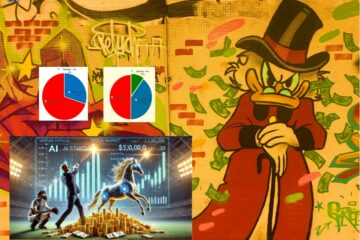Version française/French version: LINK
Startups distinguish themselves from SMEs with their very fast growth rate and their ability to demonstrate technically and commercially an exceptional value proposition to address a considerable market. When they are funded by venture capital funds, these startups aim for a critical size that allows them to circumscribe risks and to be acquired with a strong added value by an industrial group in less than 5 years, even if such rapid exits remain exceptions.
E. Krieger

The essential difference between a beautiful SME and an authentic startup does not necessarily lie in technological intensity or even in the quality of management, since entrepreneurial talent can be found in very diverse companies. The essential difference lies in the growth rate and the technical and commercial demonstration of the ability to address a considerable market through an exceptional value proposition.
These differences explain why the respective valuations of such startups are often incomparably higher than those of SMEs developing at a more moderate pace and covering a more limited market.
Innovative offers targeting markets exceeding $1 billion
Where our beautiful SME will be valued at around twice its turnover, the startup will be valued significantly more if we refer to transactions such as the September 2022 acquisition of Figma, a collaborative web design platform, acquired by Adobe for $20 billion, or 100 times its 2021 revenue and 50 times its projected revenue for 2022, then estimated at $400 million.
This company created in 2012 has developed at a phenomenal rate in the span of 10 years to become both a diversification opportunity and a real threat to Adobe. Figma provides a more modern and collaborative alternative to Adobe’s traditional design tools such as Photoshop and Illustrator.
Hyper-growth and deliberate existential threat to industry leaders
Several publications by investment bank Avolta highlight that nearly half of startups are not yet profitable at the time of their acquisition, with the median acquisition period of a startup having increased from 7 years to 9 years between 2020 and 2022.
When funded by venture capital funds, the goal of startups dedicated to hyper-growth is to achieve a critical size that allows for circumscribing technological, industrial, and commercial risks. This derisking strategy varies according to business sectors and the economic model of startups, but the ultimate goal is almost always to be resold to an industrial group that will then develop the activity on a global scale.
This alignment with a large group sometimes takes less than 3 years, as was the case with Instagram, acquired by Facebook for around $1 billion 18 months after its creation. This was also the case for:
• YouTube, acquired by Google for $1.65 billion 1.5 years after its creation.
• Oculus VR, acquired by Facebook for $2 billion after 2 years.
• Twitch, acquired by Amazon for $1 billion after 3 years.
Such substantial and rapid exits are relatively rare, but the financial logic is almost always the same: to quickly capture a market segment that is insufficiently served by existing offerings and to grow exponentially on this segment in order to represent both an existential threat and an opportunity for acquisition by an industrial group in the industry. IPOs or dividend payouts to shareholders are not the preferred compensation model for venture capitalists, who prefer a resale added value as fast as possible to ensure the liquidity of their investments.
Exceptional teams to support the managerial pressure of acceleration
This strategy is currently being applied by Pennylane, a French startup founded in 2019 by five partners who had already created PriceMatch, a startup that had developed a dynamic pricing software for the hotel industry… a startup that was acquired after 3 years by the American group Priceline.com.
Building on their initial success, the founders of PriceMatch launched Pennylane, a financial management platform for small businesses and independent workers. Pennylane raised €4 million in May 2020, €15 million in June 2021, and €50 million in January 2022 from top investors such as Sequoia Capital, Global Founders Capital, and Partech.
Using artificial intelligence, Pennylane automates common accounting tasks and provides advanced financial analysis to small businesses and independent workers.
Less than 3 years after its creation, the startup reports that « more than 50,000 leaders, independent workers, and financial directors have already adopted Pennylane » and aims to become the European reference for financial operating systems for small and medium-sized enterprises, similar to Intuit in the United States.
This startup could become an almost existential threat to established European players such as Sage Group and Cegid, whose market capitalization is much lower than that of the American company Intuit. The risk for these traditional players of being supplanted by Pennylane is the same as that which saw many automotive players disrupted by Tesla.
In this specific case, the logic of industrial and commercial derisking is once again at work to create a company that will upset established positions in just a few years. Such strategies require exceptional teams to support the managerial pressure, and this is precisely the main selection criterion for venture capital professionals when it comes to financing these atypical companies that are startups.
…
Adapted from [Krieger E. (2023), « Les startups, ces entreprises atypiques combinant dérisquage, hypercroissance et cession programmée », Les Echos Solutions, 17/03/2023.


